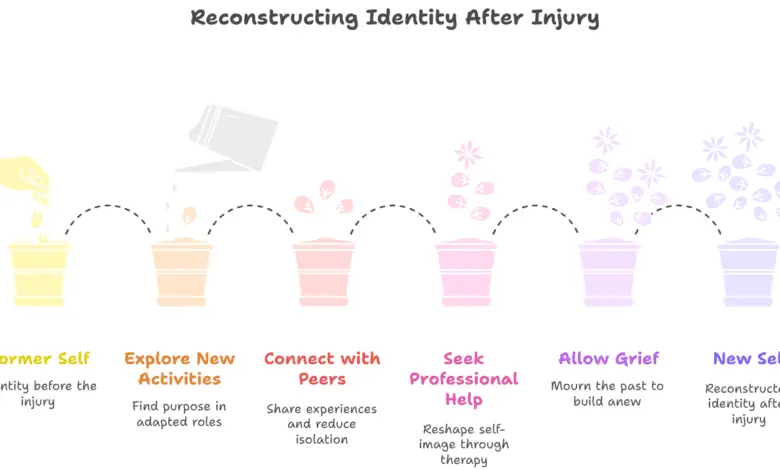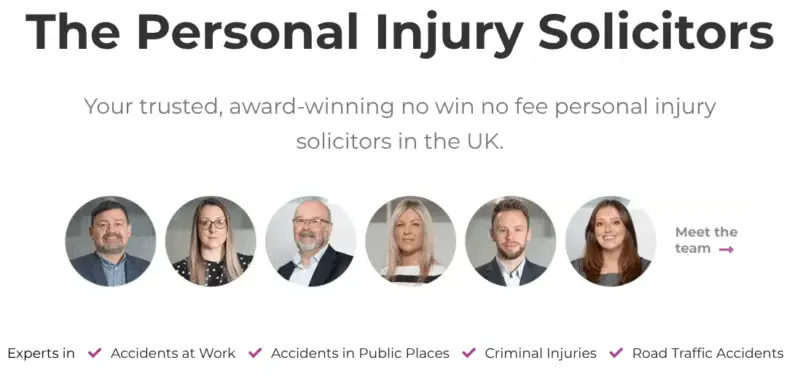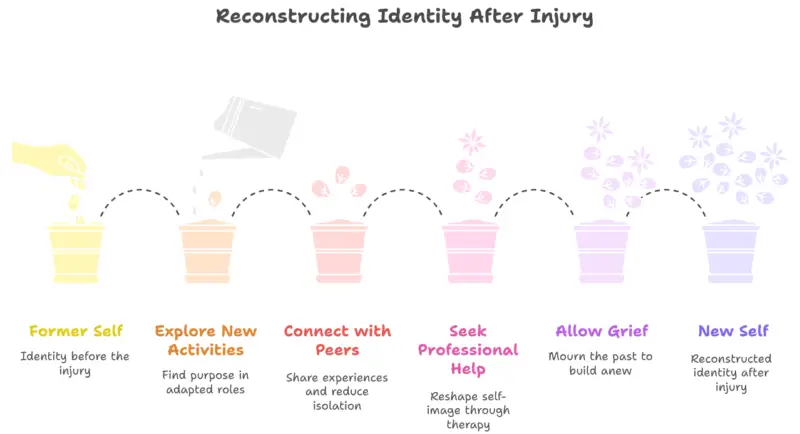
Life After a Serious Injury: Complete Guide to Support, Identity & Recovery
Life After a Serious Injury: Your Complete Guide to Support, Recovery, and Moving Forward
Life can change in the time it takes to blink.
One moment you’re heading to work, picking up the kids, or simply living your day without a care in the world. The next, you’re in hospital—and suddenly, everything feels different.
If you or someone close to you has acquired a serious injury, it’s completely normal to feel overwhelmed. You might be facing new mobility challenges, emotional upheaval, or a completely different way of living.
This guide comes from over two decades of experience. Mooneerams Solicitors has supported hundreds of people whose lives changed forever due to serious accidents. While legal expertise is crucial, we understand that behind every claim is a person navigating profound physical, emotional, and practical transformation. We take a compassionate approach to serious injury claims, ensuring the legal process never adds to the burden you’re already carrying.

This comprehensive guide shares practical steps, trusted UK support organisations, and explores how serious injury affects your identity and sense of self—because recovery isn’t just medical, it’s deeply personal.
What Happens in the Early Days After a Serious Injury?
After a severe injury—whether from a road traffic accident, workplace incident, or something else entirely—the first few days and weeks often feel like a blur. Hospital stays, surgery, pain management, physiotherapy, and a constant stream of medical professionals all happen rapidly.
Right now, you might be thinking:
- “What will my life look like now?”
- “Can I return to work?”
- “How will I manage at home?”
- “Will I ever feel like myself again?”
These questions are completely normal. So are feelings of anger, numbness, sadness, or exhaustion. Survival mode kicks in—and that’s your mind protecting you while you process what’s happened.
Life After Leaving Hospital: The Reality of Long-Term Adjustment
Once emergency care ends, many people describe the next phase as the most challenging. This is when the full scope of changes becomes clear—barriers in housing, work, transport, and social life that you never had to consider before.
You might need to:
- Learn to use mobility aids or adaptive equipment
- Adjust how you manage personal care and daily routines
- Deal with benefits systems and support services
- Rethink career or education plans
- Adapt your home environment
This isn’t just medical recovery—it’s a complete social, emotional, and practical transition. It’s okay to grieve what’s changed. This stage often brings unexpected questions about identity and purpose, which is a normal part of long-term adjustment.
🧠 Identity After Serious Injury: “Who Am I Now?”
A serious injury doesn’t just affect your body—it can fundamentally shake your sense of who you are. Many people experience what psychologists call “identity disruption” or “biographical disruption.”
You might find yourself wondering:
- “Am I still the same person if I can’t do what I used to?”
- “What happens to the version of me that was active, independent, or social?”
- “Do people see me differently now?”
These feelings are not only common—they’re valid. Your injury may have changed your circumstances, but your worth, intelligence, and capacity for meaningful relationships remain intact.
🌱 Rebuilding Your Sense of Self: Practical Strategies

Reconstructing your identity after injury takes time, but there are proven approaches that help:
Explore adapted activities that align with your values—creative pursuits, advocacy work, mentoring, or volunteer roles that give you purpose.
Connect with others who understand. Peer support groups provide invaluable perspective from people who’ve walked similar paths. Being around others who “get it” reduces isolation and helps you feel like yourself again.
Consider professional support. Narrative therapy and neuropsychological counselling have shown significant benefits in helping people reshape their self-image after injury.
Give yourself permission to grieve. Mourning your former life isn’t giving up—it’s a necessary step toward building your new one.
🎯 Where to Find Support: Trusted UK Services
You don’t have to navigate this alone. These organisations come highly recommended by disabled people and their families:
Spinal Injuries Association (SIA)
Peer support, rehabilitation advice, and campaigning for spinal cord injury rights. Their helpline connects you with people who’ve been through similar experiences.
Headway
Comprehensive support for brain injury survivors and families, including local support groups, rehabilitation services, and practical guidance.
Scope
Covers all types of disability, offering guidance on independent living, inclusive employment, benefits advice, and emotional support.
Citizens Advice
Free, impartial advice on benefits, housing, debt, employment rights, and navigating bureaucracy.
Local Authority Social Care Teams
Can assess your needs at home and recommend adaptations, equipment, or personal budgets to support independent living.
🧭 Additional Resources for Mental Health and Identity
- Headway: Identity After Brain Injury Guide
- Mind UK – Mental health resources and local support services
💼 Can You Claim Compensation After a Life-Changing Injury?
If your accident was caused by someone else’s negligence—whether a driver, employer, or public body—you can and should claim compensation.
This isn’t about blame or greed. Compensation exists to restore what’s been lost and provide security for your future. It can cover:
- Home adaptations (accessible bathrooms, ramps, stairlifts)
- Ongoing therapy and rehabilitation
- Specialist equipment and mobility aids
- Lost income and retraining costs
- Long-term care and support needs
- Mental health treatment and counselling
Many people feel guilty about pursuing compensation, especially those with the strongest cases. Remember: accessing appropriate support is practical, not selfish. A successful claim creates a safety net, ensuring you and your family aren’t left financially vulnerable.
The legal process shouldn’t add to your burden. Experienced serious injury solicitors understand the emotional complexity of your situation and handle claims with sensitivity and expertise.
🌟 Is There Life After a Catastrophic Injury?
Absolutely—though it may look different than before, and that’s okay.
Every person’s journey is unique. Some regain significant independence with appropriate support. Others discover new purpose, build different but meaningful careers, or become powerful advocates for change. There’s no fixed timeline or predetermined path.
What matters is having:
- Support from people who understand
- Choices about how you want to live
- Access to resources that help you rebuild
- Hope that your story continues—just with new chapters
You are still you. Your personality, intelligence, capacity for love and friendship, your sense of humour, your dreams—these core parts of who you are remain intact. With time, support, and connection, many people not only adapt but discover strengths they never knew they had.
Taking the Next Step
If you’re reading this while navigating a recent injury, remember that seeking help—whether practical, emotional, or legal—is a sign of strength, not weakness.
Your injury may have changed your circumstances, but it hasn’t diminished your value or potential. With the right support network and resources, you can build a life that’s meaningful, connected, and fulfilling.
If your injury was caused by someone else’s negligence, don’t wait to explore your legal options. Early legal advice ensures evidence is preserved and your rights are protected, giving you the best chance of securing the support you need for the future.
About Mooneerams Solicitors: For over 20 years, we’ve specialised in serious injury claims across England and Wales, supporting people through life-changing accidents with expertise and compassion. Learn more at mooneerams.com.
Legal Note: This article provides general guidance and isn’t a substitute for legal advice. If you’ve experienced a serious injury, please consult a qualified solicitor for advice specific to your situation.